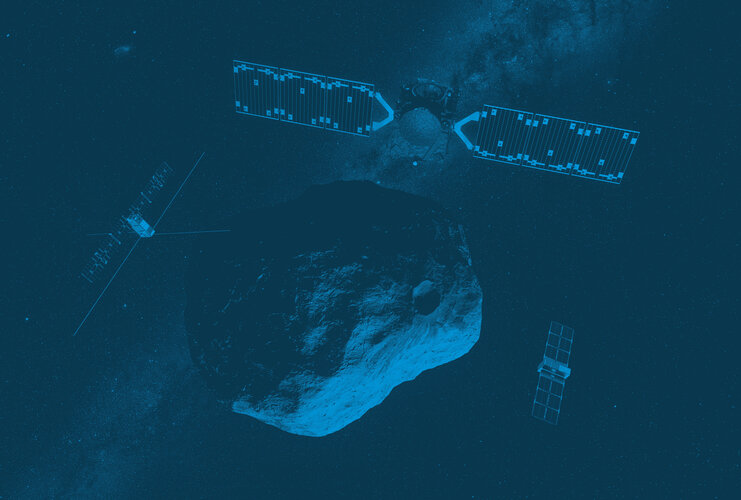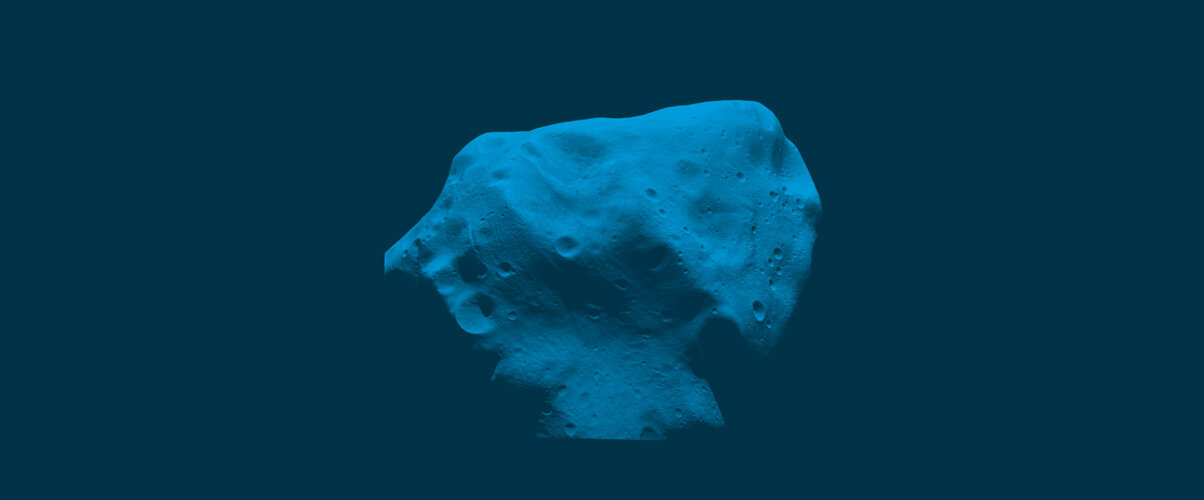Hera takes flight: Didymos, here we come
The day began with an 85% chance that bad weather would cause a launch delay: it ended with ESA’s Hera mission successfully in space and en route to the Didymos binary asteroid system.
At 16:52 CEST (14:52 UTC) on 7 October 2024, Hera took to the skies aboard a SpaceX Falcon 9 rocket from Cape Canaveral Space Force Station in Florida, USA. After a smooth 76-minute ascent, the spacecraft separated from its launcher, and, a few minutes later, ESA’s ESOC mission operations centre in Germany assumed control of the spacecraft.
Here is what has happened since then.
Hera’s first days in space

The first telemetry form Hera arrived on Earth via NASA’s Goldstone station at 18:12 CEST and confirmed the spacecraft’s successful separation from the launcher.
By 18:24 CEST, both of Hera’s 5 m solar arrays had deployed and the spacecraft had begun to generate power.
ESA’s Flight Dynamics team quickly confirmed that the SpaceX launcher had delivered Hera into the correct orbit and mission controllers began activating the spacecraft's other core systems.
We have a mission!!#HeraMission's solar arrays have deployed and its batteries are charging. The satellite is in good health and the first commands have been confirmed on board. pic.twitter.com/ChckwCmNw9
— ESA Operations (@esaoperations) October 7, 2024
Over the next 54 hours, Hera powered on and tested its star trackers (used for navigation) and its reaction wheels (used to control Hera’s orientation in space).

Mission control also tested the communication antennas that Hera will use to stay in touch with Earth via ESA’s Estrack ground station network and conducted a successful thruster test, during which each thruster was fired briefly to ensure proper functionality ahead of Hera’s upcoming deep space manoeuvre.
“It has been an action-packed few days,” says Sylvain Lodiot, Hera Spacecraft Operations Manager. “We have fine-tuned some of the systems, but overall, Hera’s first days in space have gone very well. The hardware is performing well, and we have already uplinked a few software updates.”
What’s next for Hera?

Hera is now already more than a million kilometres from Earth. Over the next few weeks, the spacecraft’s suite of scientific instruments will be gradually powered on and tested. These instruments will collect valuable data about Didymos and its moonlet, Dimorphos, once Hera arrives at the binary asteroid system in late 2026. In particular, Hera will help scientists better understand the structure of Dimorphos and how it was altered by NASA’s DART mission, which deliberately crashed into the asteroid in 2022 in the first test of asteroid deflection.
Hera will also study how binary asteroid systems like Didymos form and function. As the first spacecraft to rendezvous with a binary asteroid system, Hera will provide unique insight into these celestial bodies, which account for around 15% of all known asteroids.
Hera’s first deep space manoeuvre will begin in late October and put the spacecraft on course for its next major milestone, a flyby of Mars in March 2025. During this flyby, Hera will use its instruments to study Deimos, the smaller and more enigmatic of Mars’s two moons. This will serve as an important test for many of the spacecraft’s instruments, ensuring they are fully operational before the spacecraft arrives at its final destination, Didymos.


Access the video
Hera will perform a second deep space manoeuvre in February 2026. An ‘impulsive rendezvous’ in October 2026 will bring Hera into the vicinity of the Didymos asteroid system. The spacecraft will begin its detailed survey of the moonlet Dimorphos in 2027, which will turn the 151 m asteroid into one of the most studied objects in the Solar System.
A smooth start and a bright future

Reflecting on the mission so far, Hera Flight Operations Director Ignacio Tanco noted that while the team has faced a number of challenges expected, as is expected with every launch, Hera’s Launch and Early Orbit Phase (LEOP) has been without any major issues: “I would like to express my gratitude to all the teams involved in the preparation and execution of this first phase of the Hera mission. Hera went through a tense and improbable launch, but together we have converted that into a very smooth and successful LEOP.”

As Hera enters its approximately two-month Near-Earth Commissioning Phase, Hera Mission Manager Ian Carnelli expressed his thanks for the dedication shown by everyone involved in the mission: “Hera is an incredible mission: there is never a dull moment. Design, development, launch – every stage of the mission threw challenges and surprises at us, but everything has gone even better than I could have hoped. I could have never dreamt of a better team. I would like to take this opportunity to thank everyone involved from the bottom of my heart for the incredible effort. I cannot wait to continue this adventure.”
“Didymos, here we come.”














 Germany
Germany
 Austria
Austria
 Belgium
Belgium
 Denmark
Denmark
 Spain
Spain
 Estonia
Estonia
 Finland
Finland
 France
France
 Greece
Greece
 Hungary
Hungary
 Ireland
Ireland
 Italy
Italy
 Luxembourg
Luxembourg
 Norway
Norway
 The Netherlands
The Netherlands
 Poland
Poland
 Portugal
Portugal
 Czechia
Czechia
 Romania
Romania
 United Kingdom
United Kingdom
 Slovenia
Slovenia
 Sweden
Sweden
 Switzerland
Switzerland


































